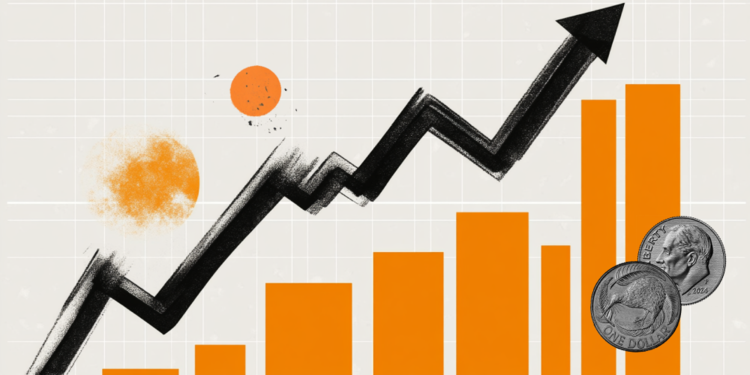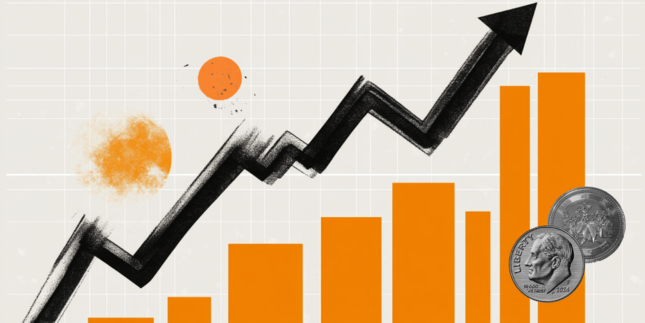NZD/USD strengthens above 0.5600 as China's GDP surpasses forecasts
- NZD/USD attracts some buyers to near 0.5610 in Friday’s Asian session.
- China’s Q4 GDP grew at 5.4%, beating market expectations.
- Fed’s Waller sees potential for multiple rate cuts this year.
The NZD/USD pair edges higher to around 0.5610 during the Asian trading hours on Friday. The New Zealand Dollar (NZD) strengthens after the stronger-than-expected Chinese economic data. Investors will take more cues from the US Building Permits, Housing Starts and Industrial Production for December, which are due later on Friday.
China’s Gross Domestic Product (GDP) expanded by 5.4% YoY in the fourth quarter (Q4) of 2024, as a flurry of stimulus measures began and helped boost Beijing’s growth, the National Bureau of Statistics (NBS) showed on Friday. This reading was stronger than the estimation of 5%, by a wide margin. On a quarterly basis, the Chinese economy grew 1.6% in Q4, compared to an increase of 0.9% in Q3. This figure was in line with the expectations of 1.6%.
Meanwhile, the country’s Retail Sales increased by 3.7% YoY in December versus 3.0 prior. Industrial Production came in at 6.2% from the previous reading of 5.4%. Both figures were above the market consensus. The upbeat Chinese economic data could boost the China-proxy Kiwi, as China is a major trading partner to New Zealand.
On the other hand, the dovish remark from the US Federal Reserve (Fed) officials could drag the Greenback lower against the NZD. On Thursday, Fed Governor Christopher Waller said that the US central bank could cut the interest rates multiple times this year if inflation eases as he expected.
Traders raise their bets for a slightly more aggressive pace of rate reduction following Waller’s remarks. Market-implied chance for a May move rose to nearly 50%, according to CME Group data.
New Zealand Dollar FAQs
The New Zealand Dollar (NZD), also known as the Kiwi, is a well-known traded currency among investors. Its value is broadly determined by the health of the New Zealand economy and the country’s central bank policy. Still, there are some unique particularities that also can make NZD move. The performance of the Chinese economy tends to move the Kiwi because China is New Zealand’s biggest trading partner. Bad news for the Chinese economy likely means less New Zealand exports to the country, hitting the economy and thus its currency. Another factor moving NZD is dairy prices as the dairy industry is New Zealand’s main export. High dairy prices boost export income, contributing positively to the economy and thus to the NZD.
The Reserve Bank of New Zealand (RBNZ) aims to achieve and maintain an inflation rate between 1% and 3% over the medium term, with a focus to keep it near the 2% mid-point. To this end, the bank sets an appropriate level of interest rates. When inflation is too high, the RBNZ will increase interest rates to cool the economy, but the move will also make bond yields higher, increasing investors’ appeal to invest in the country and thus boosting NZD. On the contrary, lower interest rates tend to weaken NZD. The so-called rate differential, or how rates in New Zealand are or are expected to be compared to the ones set by the US Federal Reserve, can also play a key role in moving the NZD/USD pair.
Macroeconomic data releases in New Zealand are key to assess the state of the economy and can impact the New Zealand Dollar’s (NZD) valuation. A strong economy, based on high economic growth, low unemployment and high confidence is good for NZD. High economic growth attracts foreign investment and may encourage the Reserve Bank of New Zealand to increase interest rates, if this economic strength comes together with elevated inflation. Conversely, if economic data is weak, NZD is likely to depreciate.
The New Zealand Dollar (NZD) tends to strengthen during risk-on periods, or when investors perceive that broader market risks are low and are optimistic about growth. This tends to lead to a more favorable outlook for commodities and so-called ‘commodity currencies’ such as the Kiwi. Conversely, NZD tends to weaken at times of market turbulence or economic uncertainty as investors tend to sell higher-risk assets and flee to the more-stable safe havens.
Forex News
Keep up with the financial markets, know what's happening and what is affecting the markets with our latest market updates. Analyze market movers, trends and build your trading strategies accordingly.




















